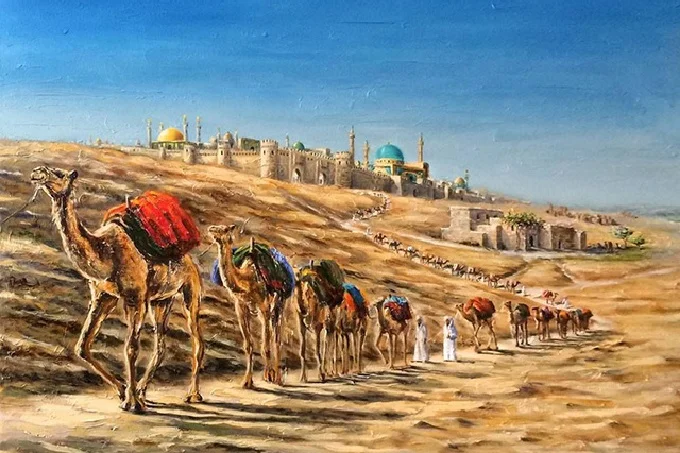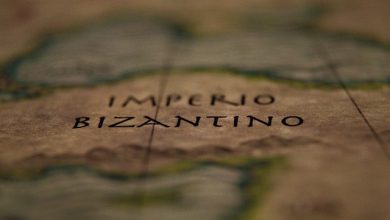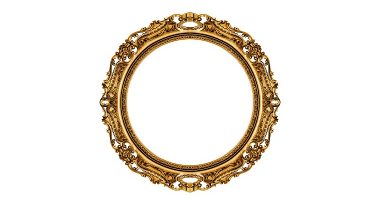What is silk route and why was the path that connected East and West called ‘silk’

For many centuries Asia and Europe were connected by an important trade artery called the Great Silk Road. It was not a single route, it was a whole transport and trade network.
Merchants and missionaries, diplomats and nomads, warriors, traveled on horses and camels, overcoming great distances. So the West and the East exchanged goods and technologies and adopted culture, medicine, knowledge, and religious traditions from each other. This made the world the way it can be observed today, making changes in the development of ancient civilizations.
Why “silk,” and why was the Silk Road named that way?
During the existence of this trade and transport network, it was not called as it is used to today. The term “Silk Road” was coined only in 1877. So it was named by the German geographer Ferdinand Freiher von Richthofen. He researched the flourishing trade between the Roman Empire and China from the 3rd century BC to the 3rd century AD. This route was important until the 18th century. Then overland trade was supplanted by sea trade.
What was traded on the silk road?
1. Silk
Of course, it’s silk! After all, the term did not take its name from him for anything. For the first time, this expensive material was produced in China three millennia before the birth of Christ. This fine fabric has become the most valuable commodity in the land trade. Diplomatic and trade caravans traveled thousands of kilometers to buy and deliver silk for European fashionistas and dandies.
In addition to being an incredibly valuable commodity, silk also possessed a number of qualities useful to merchants. The carrying capacity of the pack animals was very limited. And silk fabrics were not so heavy, but they were incredibly expensive. This was a very important asset in those days.
The Roman aristocracy treasured Chinese silks. These were luxurious fine fabrics, incredibly beautiful textiles of splendid workmanship. Later, the technology of its production was adopted in the Mediterranean. Damascus artisans have created a new kind of fabric – double-sided woven silk textiles. They began to call it – Damascus.
In Eastern cultures, silk was not just an expensive garment. It was used for sewing ritual banners, and canvas for paintings was made of it. In one of the settlements on the Silk Road, called Turpan, silk was a hard currency. They were also paid taxes.
2. Horses
For the first time in the steppes of Central Asia, horses began to be domesticated around 3700 BC. These animals were then successfully used for transportation. With their help, the tribes roamed, and also raided neighboring territories.
Horses have gained popularity among other peoples as a pack and draft animals. They were used to cultivate fields, drive and use them in wars. Horses were often exchanged for silk. Chinese traders exchanged with nomads.
A well-bred horse from the Mongolian steppes or the Tibetan plateau was worth a roll of silk. It was a very expensive item. Expensive textiles provided status, and so did horses. After all, they were not only a means of transport but also a luxury item for the elite of the Eurasian society of that time.
In this light, it becomes clear why the famous tomb of the Chinese emperor Qin Shi Huang (259–210 BC) contains not only terracotta sculptures of warriors but also incredibly realistic statues of 520 chariots and 150 cavalry horses.
3. Paper
Paper was invented in the Chinese Empire in the 2nd century BC. This exotic material then quickly spread throughout Asia, thanks to Buddhist monks. The Islamic world learned about the paper in the 8th century when it waged wars with the Chinese Tang Dynasty. After that, Caliph Harun al-Rashid built a paper mill in Baghdad. Then the material was brought to Egypt, and then to Africa. After that, technology reached Europe. It was first tested in the 12th century in Spain. After which, it spread throughout the continent.
Paper performed a number of very valuable functions on the Silk Road. It was not only a commodity. The documents, which served as a kind of passports and passes, were paper. Also, merchants and diplomats transported books, poetry, and scientific texts written on it. This served as the transfer of knowledge, new systems of thought, religious beliefs. This ideological and cultural exchange based on paper was the most important value of the Great Silk Road.
4. Spices
Spices were another extremely valuable commodity on the Silk Road. Sri Lankan cinnamon, Chinese cassia, and many others were exotic and important, the most desirable trade items of those times. Spices were prized not only for their culinary properties, they were used in medicine as well as in religious rituals.
Silk textiles could be produced wherever silkworms could be bred. Spices were obtained from plants that needed very specific conditions. This incredibly increased their value, turning them into a true luxury item of that era.
5. Jade
This highly valuable mineral has played a central role in Chinese ritual culture. The beautiful green gem was highly prized in Europe as well. Thousands of years before the emergence of the Silk Road, China was already actively trading with the West in these crystals along the route that was then called the Jade Route.
When the reserves of this precious green crystal were depleted in the eastern empire, the Chinese began to look for it from their neighbors. The ancient Iranian kingdom of Khotan turned out to be a treasure. The rivers there were full of huge chunks of the most valuable kind of jade, from which intricate figures and ornaments were carved. The jade trade brought fabulous profits. This could rival the pearl trade.
6. Glassware
Europeans often think that most of the Silk Road goods came from the exotic Far East only to the West. But in fact, it thrived successfully in all directions. Archaeological finds prove this in China, Korea, Thailand, and the Philippines. Scientists, among the valuable things that belonged to the Asian nobility, found Roman dishes. The unique Roman glass-making technology made their glassware incredibly valuable in the East.
7. Fur
Taiga is a huge territory of evergreen forests from Russian Siberia to Canada. It has long been an area famous for its skilled hunters. Fur was a very valuable commodity. Sable, mink, fox fur, ermine, and beaver skins were luxury goods.
The highest officials of the world states loved to decorate their clothes with them. This was a sign of very high status. There was a northern “fur route” along which furs were delivered to the courts of all Eurasian monarchs. The value of fur is evidenced by the fact that Genghis Khan himself sealed one of his first political alliances with the gift of a sable.
8. Slaves
Slaves were a common commodity on the Silk Road. Nomad armies took many people into captivity and sold them to private traders. Those resold live goods further, and these were not quite so powerless people. They became servants, stewards, and eunuchs at royal courts.
This was not like the African slave trade, where people were brought to the New World as disenfranchised animals. On the Silk Road, slaves were only an ornament to the lives of the elite and not an important economic resource.




